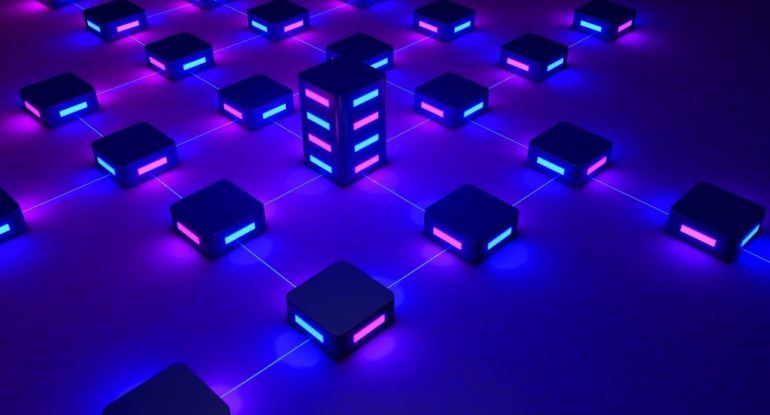The function of BNB Chain within the blockchain ecosystem

The native cryptocurrency of the Binance ecosystem is called Binance Coin (BNB). BNB was first introduced in 2017 as an ERC-20 token on the Ethereum network with a 200 million total supply. 2019 saw the launch of Binance’s mainnet swap and the transfer of all BNB tokens to the BNB Chain.
Two BNB-powered blockchains make up the BNB Chain:
Previously known as Binance Chain, the BNB Beacon Chain is the blockchain that manages BNB Chain governance activities, including voting and staking. Previously known as the Binance Smart Chain (BSC), this blockchain supports smart contracts using the Ethereum Virtual Machine and is fully interoperable with Ethereum’s tools and decentralized applications (DApps).
Now a crucial component of the Binance ecosystem is the native Binance Coin. It is utilized to run Binance and Binance’s activities. US exchanges, as well as other BNB Chain-based programs, such as:
- PancakeSwap
- Biswas
- ApeSwap
- Vehicle Finance
- Avarice
- Libera.Financial
- Nominee/Nomiswap
- the era of the dinosaurs
- Finance DEX
- Broad Leverage
These are a tiny sample of the numerous dApps developed on the BNB chain network. One of the most well-known exchanges in the world, Binance is still the largest cryptocurrency exchange by trading volume.
Describe a coin burn.
When a cryptocurrency project burns part of its coins, it usually lowers the total supply in circulation and raises the value of the still in circulation. The coins are delivered to a defunct crypto wallet with an unknown private key, rendering them permanently unusable.
Coin burning is frequently carried out every quarter or every two years. For instance, Binance has pledged to destroy 100 million BNB tokens by burning them every three months. The remaining supply will be 100 million BNB, the most that can be produced.
BNB burns in what ways?
The Binance Evolution Proposal (BEP)-95 burning mechanism is the first. BNB is burned in real-time through BEP-95 by burning a portion of the gas fees used for BSC. Since the BNB Smart Chain’s 2021 upgrade, BEP-95 has kept burning about 860 BNB daily.
Changpeng Zhao, CEO of Binance, adopted BEP-95 to speed up BNB’s burn rate, which was moving more slowly than expected. An ongoing supply of BNB is made available by BEP-95 by burning a portion of the gas costs collected by each block’s validators. BEP-95 will keep burning the BNB chain even after the 100 million burn target has been attained because it depends on the BSC network. The BNB Burns Tracker Bot on Twitter can be used to monitor the progress of the BEP-95 burn:
BNB Chain will burn over 1.8 million binance coins (BNB) in its first burn this quarter.
“$741,840,738 worth of #BNB will be taken out of circulation soon,” Binance CEO Changpeng Zhao confirmed in a tweet.
The burn would be done at an average price of $403 per $bnb
#binance pic.twitter.com/oLBilIFG87— Victor Fawole (@Victorfawole0) April 19, 2022
Yearly Automatic Burn
The second technique is Binance’s regular quarterly burning. A predetermined quantity of BNB is purchased off the open market and burned in these burns. The initial fire, which burned 986,000 BNB chains, occurred in October 2017.
The quarterly burning is scheduled far in advance and is funded by Binance’s revenues. The quantity of BNB to be burned depends on various variables, including overall profitability, the supply of BNB in circulation, and the number of blocks generated each quarter. A total of 1,839,786.261 BNB had been burned as of the most recent fire in April 2022:
BNB Auto-Burn: What is it?
Along with the debut and renaming of Binance Chain and Binance Smart Chain as BNB Chain, BNB auto-burn was developed. The auto-burn mechanism, according to Binance, was created to optimize the value of the BNB coin and offer a secure and long-term growth strategy for the BNB ecosystem.
Based on the volume of BNB traded on its exchange, Binance used to do quarterly BNB burns. However, BNB auto-burn took the place of quarterly burns in December 2021.
The auto-burns are still carried out every quarter, but they are no longer based on Binance trading volume. According to two variables, the BNB auto-burn mechanism automatically modifies the amount of BNB that must be burned:
Blocks are created on BSC each quarter at the BNB price.
The new BNB chain burning procedures, according to Binance, offer improved transparency and are more reliable than the old quarterly burn approach. The new auto-burn system will protect the BNB price from significant volatility, according to the Binance team.
What functions does BNB auto-burn?
From a technological standpoint, BNB auto-burn determines how much BNB should be burned using on-chain data from the BNB Smart Chain. The system “adjusts” the burn amount in this way.
Supply and demand dynamics have an impact on the burn amount as well. Coin burns increase a cryptocurrency’s value, as was already mentioned. Therefore the burn rate rises when the price of BNB decreases. The purpose of BNB auto-burn was to stay unaffected by BNB trading volume on Binance (which used to be its sole basis). This is done to reassure the BNB chain community that the procedure is transparent, unbiased, and verifiable.
Quarterly burn for BNB
Quarterly auto-burns replaced the previous quarterly burn process. Auto-burn accomplishes the same goal but is more transparent and effective. The expected quarterly BNB auto-Burn amount for various BNB chain average prices is displayed in the chart below:
Also, read – The Binance Blockchain Bridge has been upgraded to connect DeFi and CeFi.
The following BNB burn is when?
On April 19, 2022, the most recent BNB Burn occurred, resulting in the auto-burn destruction of 1,830,382 BNB worth $772,363,806. The 20th burn is not scheduled yet, although it is anticipated anytime between July 16 and July 20, 2022. For information on the upcoming auto-burn, keep an eye on Twitter, where Binance CEO Changpeng Zhao typically publishes BNB burn dates.




























































